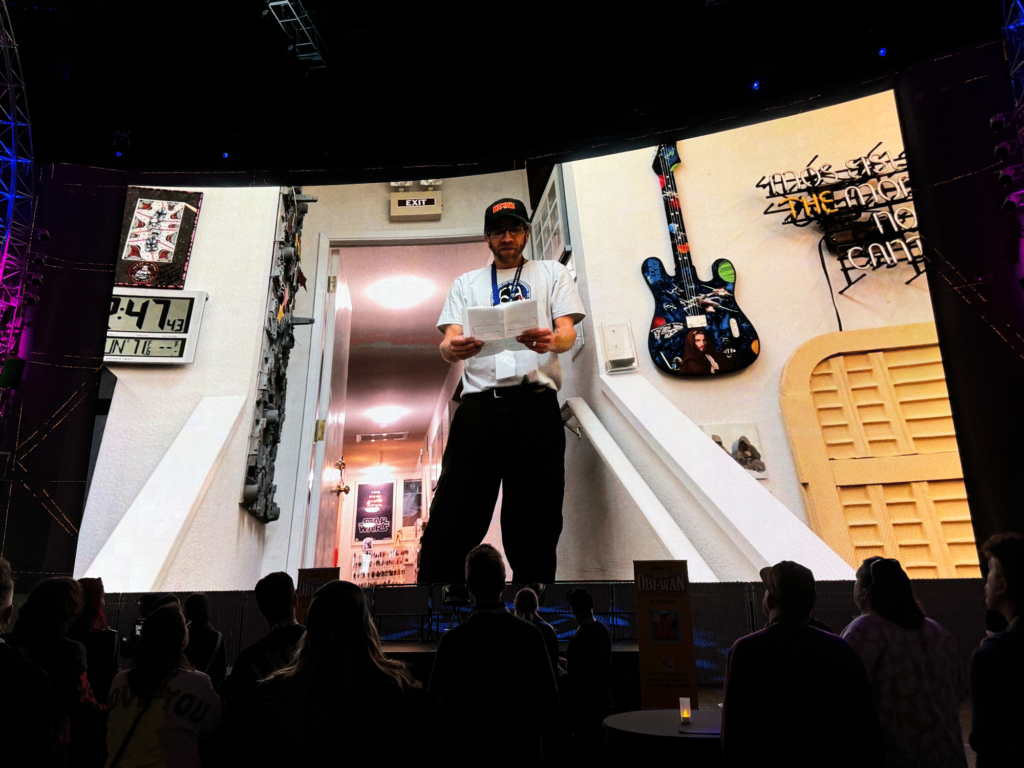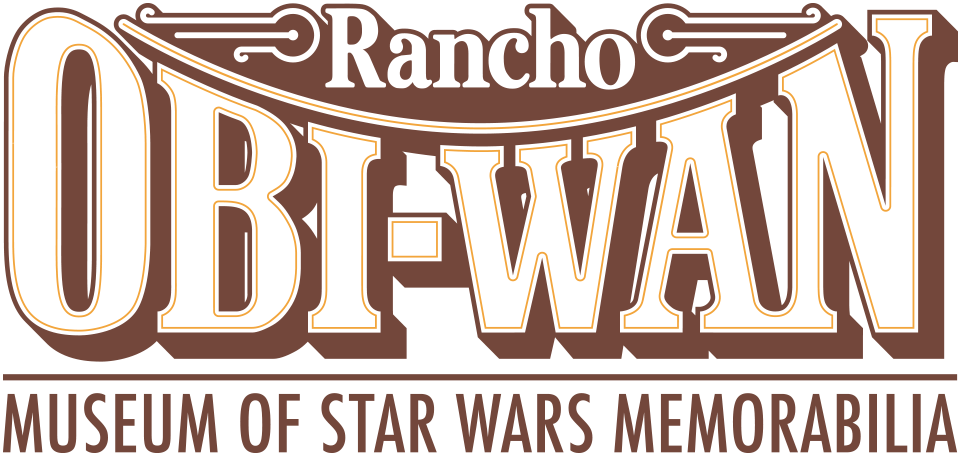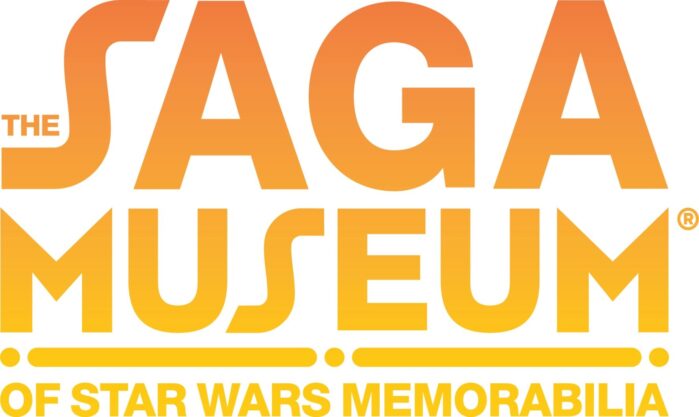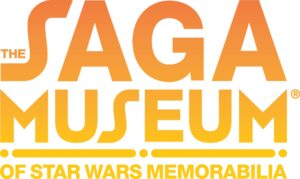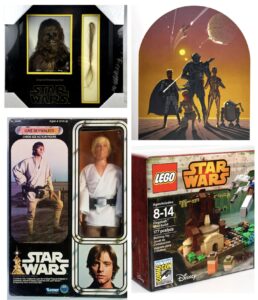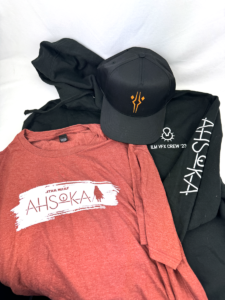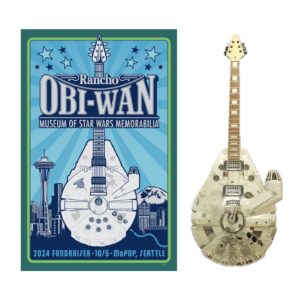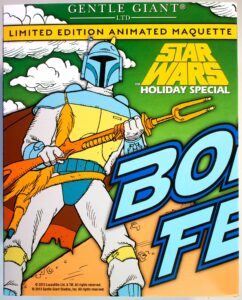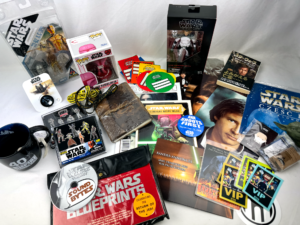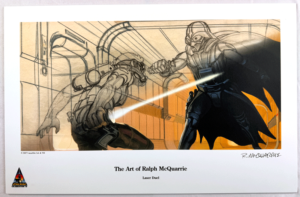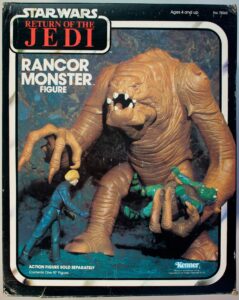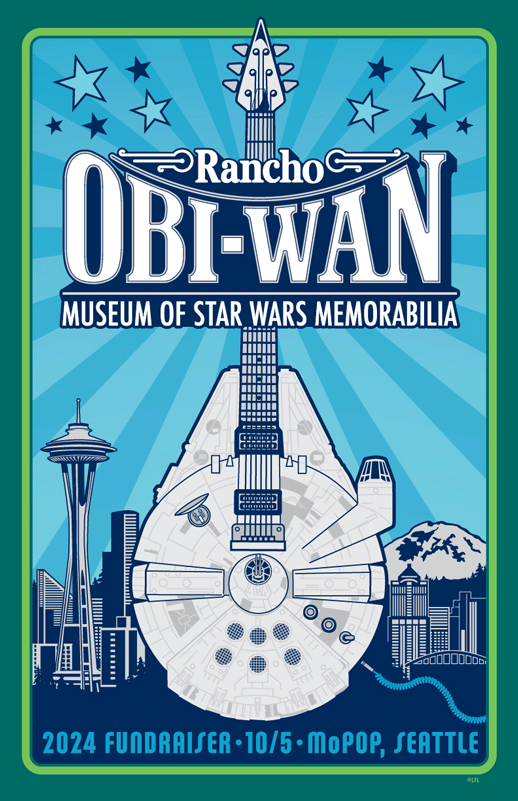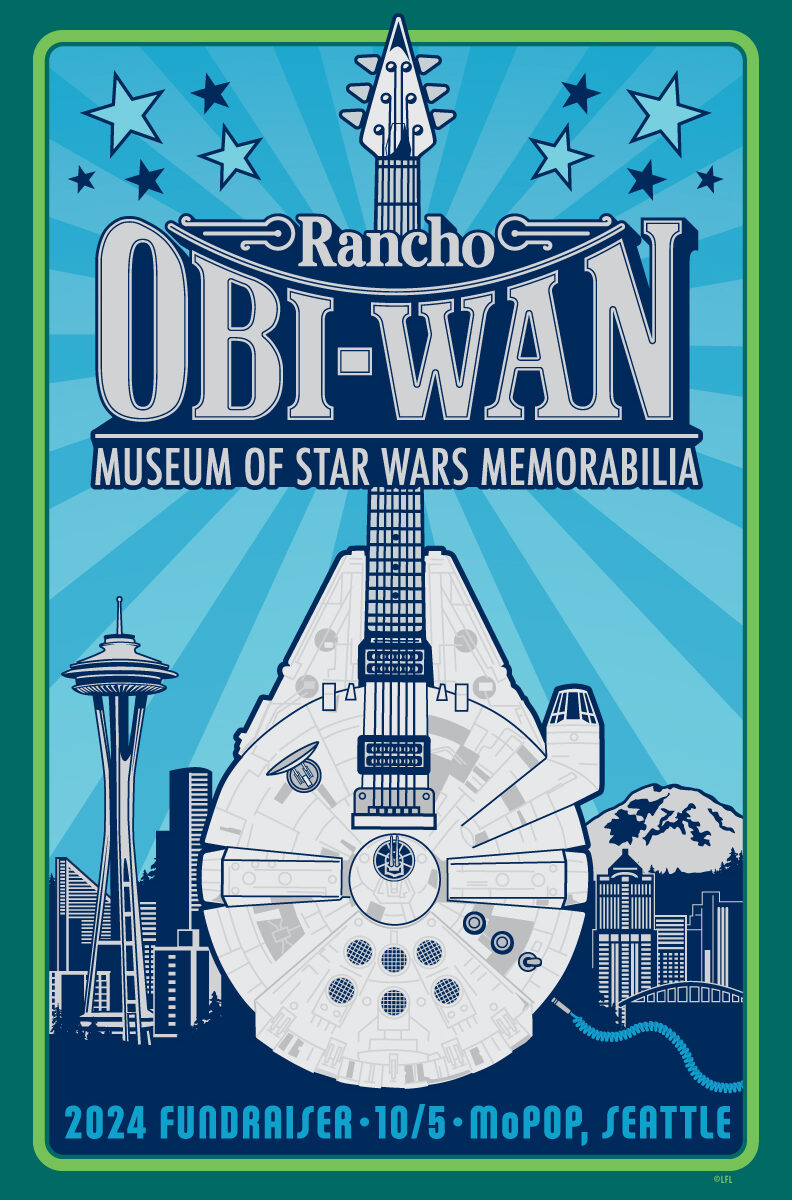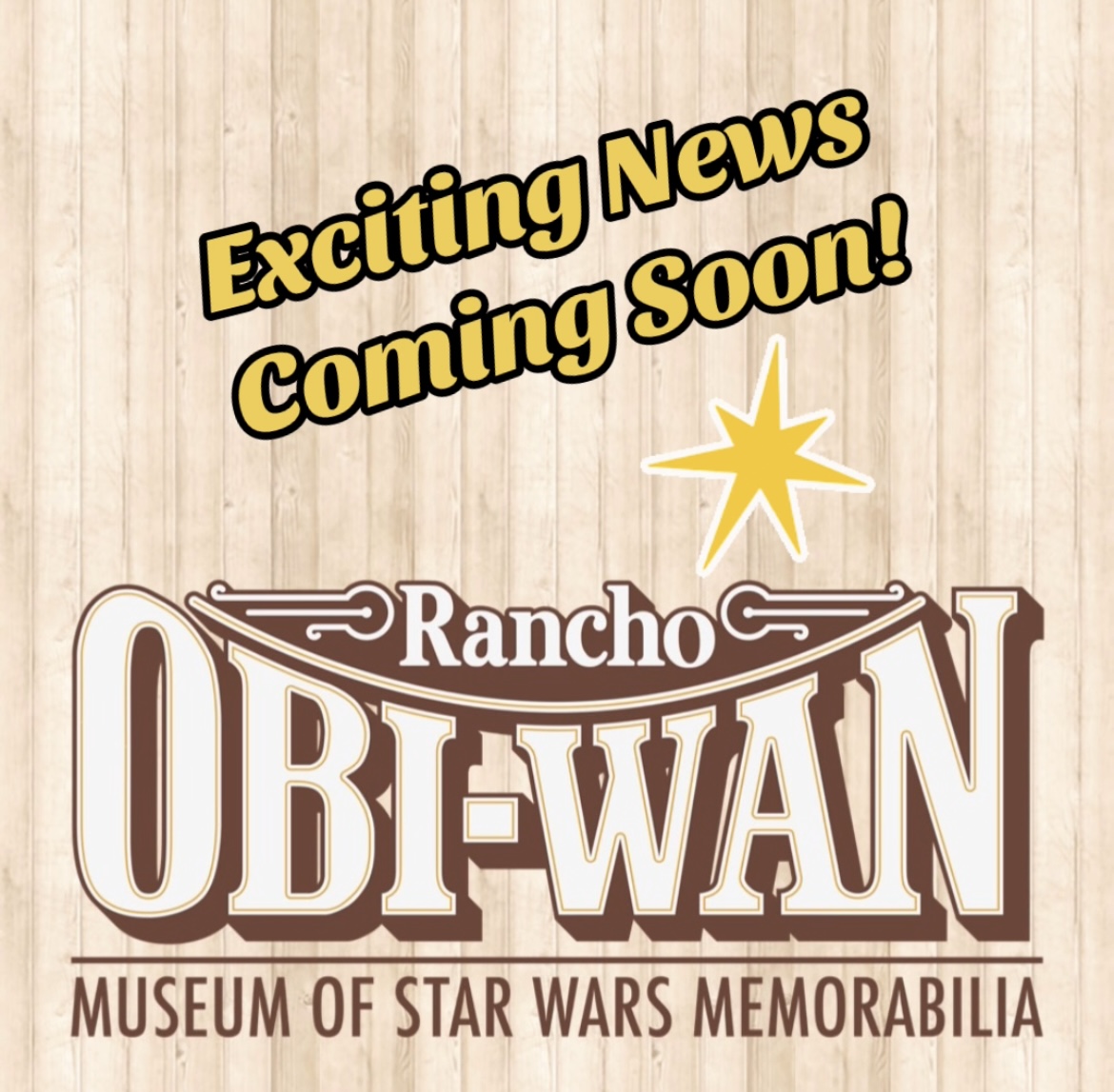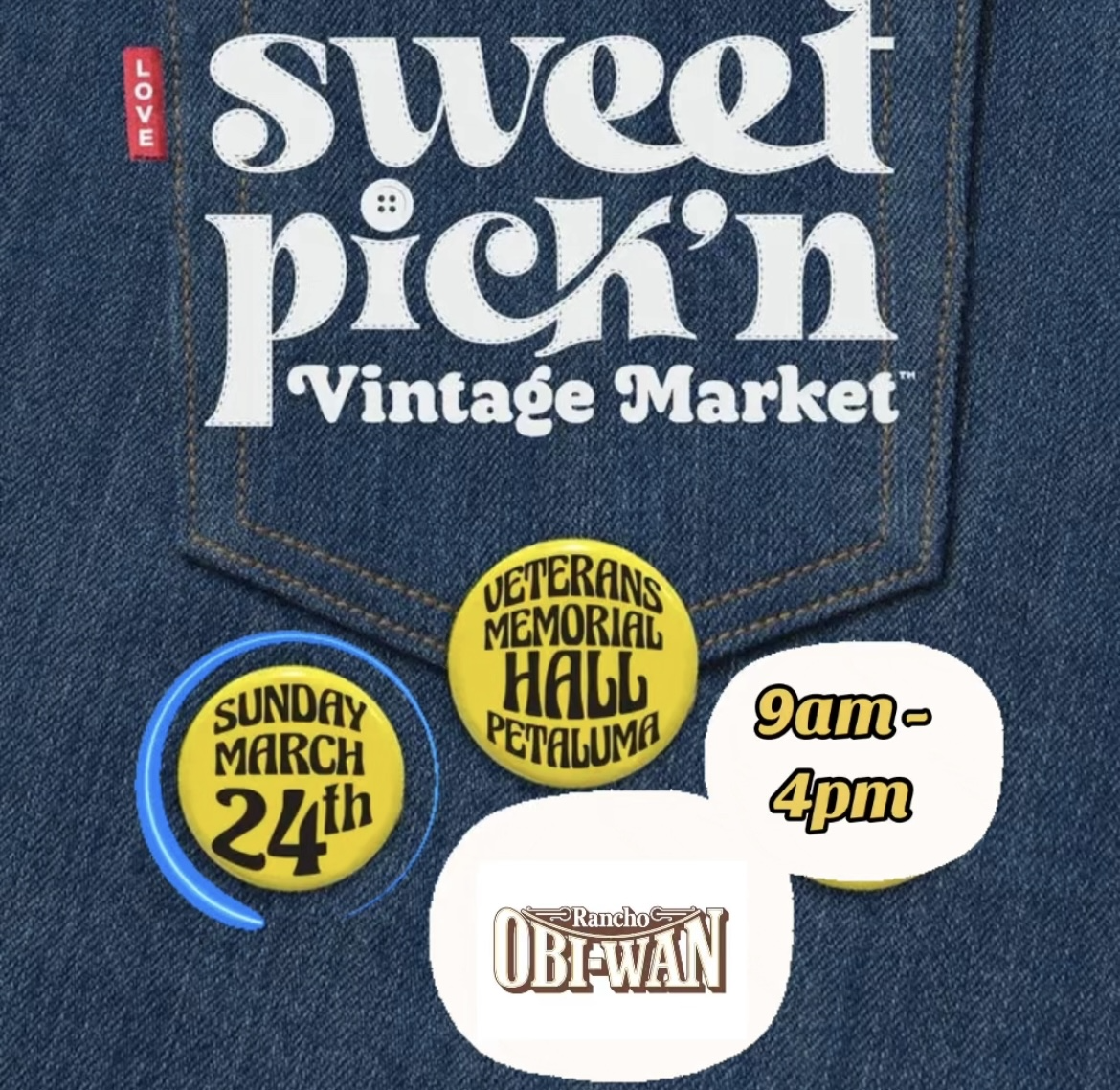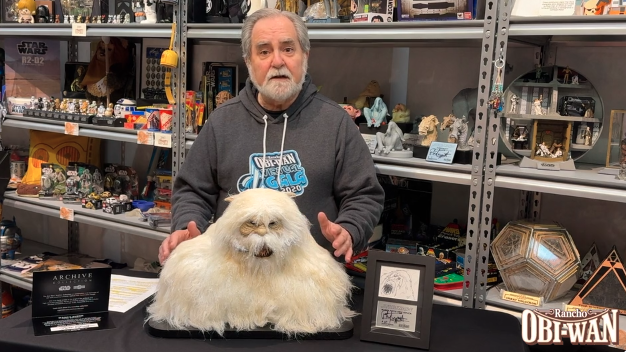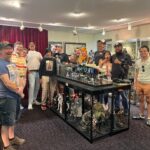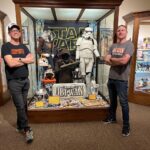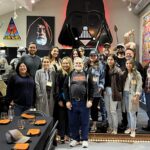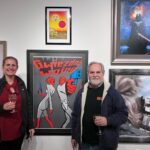Rancho Obi-Wan would like to thank the following folks for their help with and support of our recent fundraiser at The Museum of Pop Culture in Seattle. It takes so many people to produce an event like this, we hope we haven’t forgotten anyone! The event raised $49,369.06, and when doubled by a generous match from Lisa Stevens & Vic Wertz, the total became $98,738.12! Funds raised are used for insurance, utilities, wildland fire defensible space, professional services, maintenance on the buildings, and protection and preservation of the collection.
This allows us to continue to use the collection to inspire–thank you for joining us in our mission! Your generosity makes it all possible.
Thank you to all our Attendees and Absentee Bidders–we love visiting with you!

Rancho Obi-Wan Board Members
Steve Sansweet
Anne Neumann
Gus Lopez
Duncan Jenkins
Rich Smolen
Michael Wistock
Dan Norgan
Pete Vilmur
Lisa Stevens
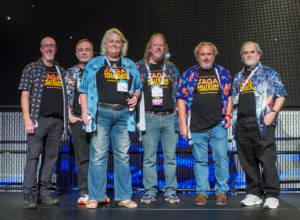 The Saga Museum Leadership Team
The Saga Museum Leadership Team
Steve Sansweet
Anne Neumann
Gus Lopez
Duncan Jenkins
Rich Smolen
Michael Wistock
Lisa Stevens
Vic Wertz
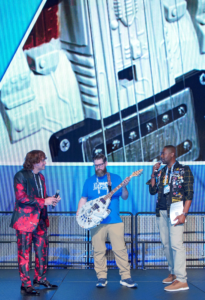 Host
Host
Mark Daniel
Key Art Design
Curt Hanks
emroosh Productions
Mark Rusciano
Sponsors
Creative Fundraising Advisors
Hallmark
Joel & Debra Luker
Propstore
Skywalker Vineyards
Tony Clemens & Silvia Clemens
Patrons
Alex Cohn
Chad Giacomozzi
Daniel Uthman
Gail DeGiulio
George Lai
Kendall Gelner
Chickaphant
Nilmini Klur
Peter Arcuri
Warzers
William Magalio
Anonymous Donors
Guitar Exhibit
Gus Lopez
Steve Sansweet
Lisa Stevens
Vic Wertz
Jim Gibbons
Auction Donors
Amy Sjoberg
Brad Cook for ColinCantwell.com
Britt Lightning
Charmaine Cuddie
Curt Hanks
Duncan Jenkins
Funko
Gus Lopez
Hallmark
Jerry VanderStelt
JM Cellars
Jim Gibbons
Jody Plank
Lisa Stevens
Mark Raats
Michael O’Shields
Po Zu
Propstore
Russell Walks
San Francisco Giants Baseball Club
Spencer Brinkerhoff III
Stan Stice for Ralph McQuarrie Archives
Steve Sansweet
Surrell Restaurant
The Herbfarm Restaurant
Toby Todd
Tom Johnson for Skywalker Vineyards
Tom Spina Designs
Vic Wertz
Walt Crowley
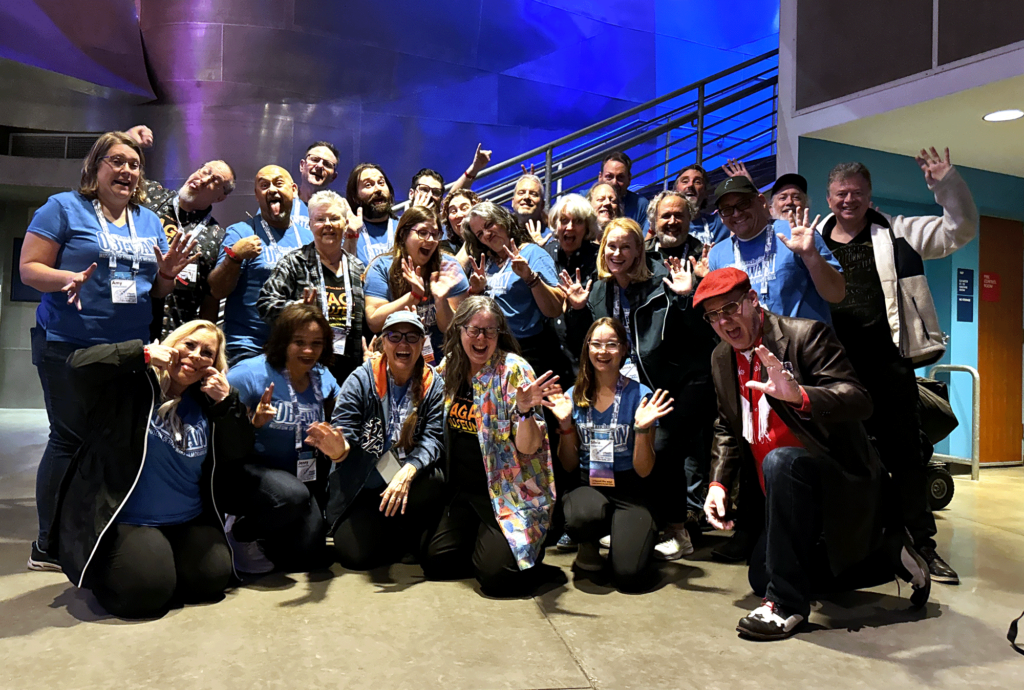
Volunteers
Beto Lopez
Joseph Pedersen
Sarah Silverman-Pucci
Kevin Lam
Luke Yates
Paul Hoeffer
David Pucci
Mercedes Santaella-Lam
Tony Damata
Amy Sjoberg
Jim Gibbons
Mark Rusciano
Susan Rogers
Thomas Stewart
Michal Stewart
Curt Hanks
Anne Jenkins
Red Dodge Wistock
Lorena Gies
Devonna Dickey
Kim Buckley
Laura Roberts
Daniel Roberts
Jenny Morales
Tony Clemens
Silvia Clemens
Dwayne Smith
David Buckley
Yannik Morales
Aileen Sweeney

Friday Collection Tour Hosts
Gus Lopez & Pam Green
Lisa Stevens & Vic Wertz
Wine Tasting & Charcuterie
Earl Bergquist
Anne Neumann
Lorena Gies
Michal Stewart
Duncan Jenkins
Anne Jenkins
Jim Gibbons
Skywalker Ranch wine donated by Scott Magerfleisch
in loving memory of Melissa Magerfleisch
Drivers
Tom Stewart
Jim Gibbons
Publicity
Consetta Parker
David Perry & Assoc.
Creative Fundraising Advisors
Joanne Curry
Nico Gervasoni
Paul Johnson
Cinema Relics
The Saga Museum video
Dan Lanigan
Jason Henry
Jason Baffa
Carson Oyler
MoPOP Staff
Elisabeth Fleming-Prot
Ed Maloney
Mae Salizon
Stephanie Lansbery
Jacob McMurray
Briana Van Over
The Big Drive
Anne Neumann
Lorena Gies
Susan Rogers
Anastasia Lipske
Dwayne Smith
Emotional Support Humans
Tracy Kelly
Victoria Webb
Joanie Neumann
Pam Green
Bob Canning
Anne Jenkins
Red Wistock
Temple Smolen
Garet Jones
Photo Booth
Coachella Party
The Ballad of Rancho Obi-Wan
a parody of “The Ballad of Gilligan’s Isle”
in loving memory of Stewart Levy & Jerry Treiber
